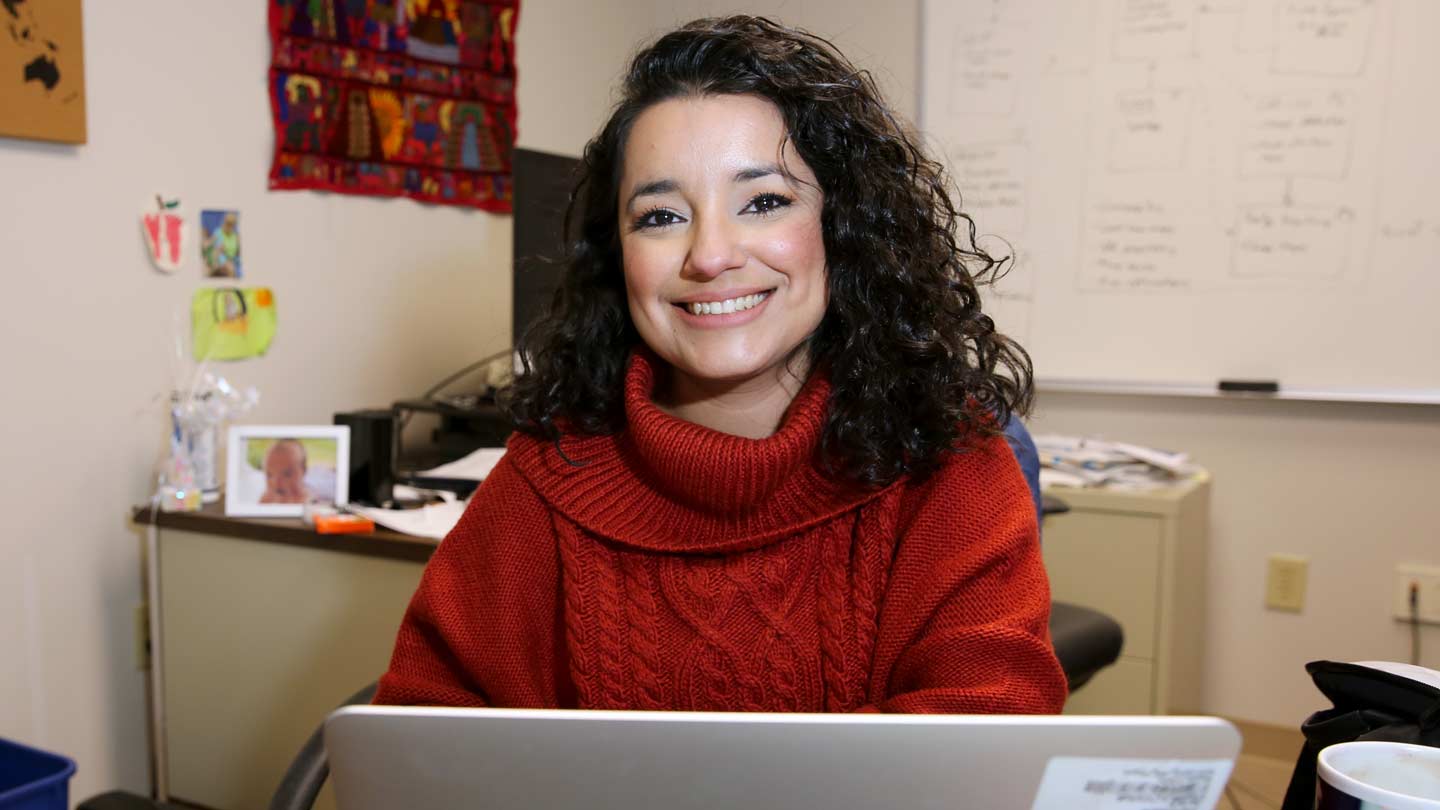
Africa Flores will use her AI for Earth Innovation Grant to focus on developing a prototype of a harmful algal bloom early warning system.
Michael Mercier | UAH
A research scientist at The University of Alabama in Huntsville (UAH) Earth System Science Center (ESSC) is one of 11 change-makers selected to receive Microsoft and National Geographic AI for Earth Innovation grants to apply artificial intelligence (AI) to help understand and protect the planet.
Africa Flores, who is originally from Guatemala, will use her AI for Earth Innovation Grant to focus on developing a prototype of a harmful algal bloom (HAB) early warning system to inform Guatemalan authorities about upcoming HAB events in Lake Atitlan, a landmark of Guatemala’s biodiversity and culture.
"The research team at UAH and I will use these funds to work on using artificial intelligence to test a number of environmental and weather variables for their skill to forecast harmful algal blooms in Lake Atitlan," says Flores, whose proposal was proposal was one of those selected from over 200 applications.
Flores has been at UAH since 2011, beginning as a graduate research assistant in ESSC’s masters program. "I work with the SERVIR program, a NASA and USAID partnership that fosters the use of Earth observations and geospatial technologies to address environmental challenges in Africa, Asia and Latin America," she says.
"Africa has been working in remote sensing of water quality for many years, and wrote her graduate thesis at UAH on the subject," says Dr. Robert Griffin, associate professor in atmospheric science, who works with Flores. "For Africa, being Guatemalan herself, this funded research carries additional meaning, allowing her to reach back and have impact in communities in the country where she grew up."
The AI for Earth Innovation Grant program will provide award recipients with financial support, access to Microsoft Azure and AI tools, inclusion in the National Geographic Explorer community and affiliation with National Geographic Labs, an initiative launched by National Geographic to accelerate transformative change and exponential solutions to the world’s biggest challenges by harnessing data, technology and innovation.
The grants will support the creation and deployment of open-source trained models and algorithms so they are available to other environmental researchers and innovators, and thereby have the potential to provide exponential global impact. The AI for Earth Innovation Grant program builds upon Microsoft’s AI for Earth program, which counts as grantees nearly 200 individuals and organizations on all seven continents, and the National Geographic Society’s 130-year history of grant-making, supporting more than 13,000 grant projects along the way.
"I’m extremely happy and honored to be working with top-notch scientists in this proposal, all from UAH," Flores says. "I feel extremely privileged to be a part of research center like the ESSC at UAH. This university, my former advisors and professional colleagues have provided me with lifelong lessons and growth opportunities. I love to be able to do scientific research and to have the support of a whole system designed to foster novel and applied scientific research."